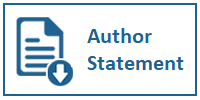Avia Saga: A Gamified Mobile-Based Learning Management System
DOI:
https://doi.org/10.31937/ijnmt.v11i1.3675Abstract
The usage of Learning Management Systems (LMS) has increased since the Covid-19 pandemic. LMS have drawbacks despite the advantages they provide. To fully support the advantages they provide, students must be motivated and involved. Adding gamification to the LMS is one way to potentially solve this issue. The MDA framework and Octalysis are combined in this research's gamification approach. The application, named Avia Saga, was designed and built using Flutter and Spring Boot as a mobile application. A trial of the application was conducted with 38 students majoring in Informatics. The evaluation of the application was done using the Hedonic-Motivation System Adoption Model (HMSAM) with a Likert scale. The research results revealed a 7% increase in the behavioral intention to use category, suggesting a greater inclination for reusing the application, and an 11.7% increase in the immersion category, indicating elevated sentiments of users being carried away by the ambiance while using the application.
Downloads
Additional Files
Published
How to Cite
Issue
Section
License
Authors retain copyright and grant the journal right of first publication with the work simultaneously licensed under a Creative Commons Attribution-ShareAlike International License (CC-BY-SA 4.0) that allows others to share the work with an acknowledgement of the work's authorship and initial publication in this journal.
Authors are able to enter into separate, additional contractual arrangements for the non-exclusive distribution of the journal's published version of the work (e.g., post it to an institutional repository or publish it in a book), with an acknowledgement of its initial publication in this journal.
Copyright without Restrictions
The journal allows the author(s) to hold the copyright without restrictions and will retain publishing rights without restrictions.
The submitted papers are assumed to contain no proprietary material unprotected by patent or patent application; responsibility for technical content and for protection of proprietary material rests solely with the author(s) and their organizations and is not the responsibility of the IJNMT or its Editorial Staff. The main (first/corresponding) author is responsible for ensuring that the article has been seen and approved by all the other authors. It is the responsibility of the author to obtain all necessary copyright release permissions for the use of any copyrighted materials in the manuscript prior to the submission.















